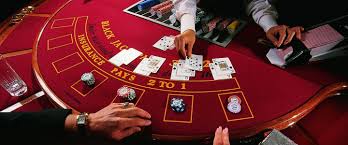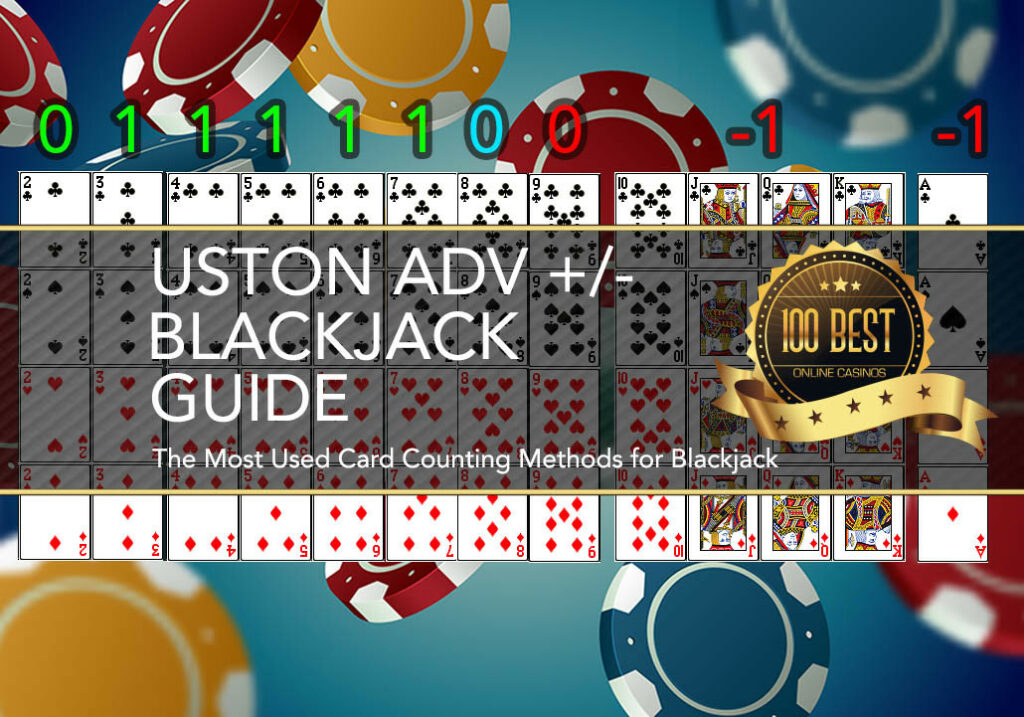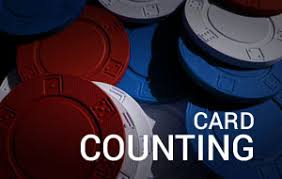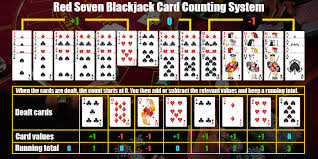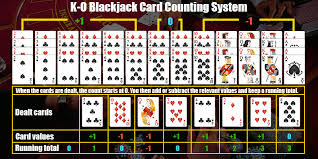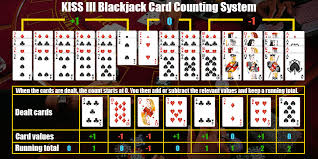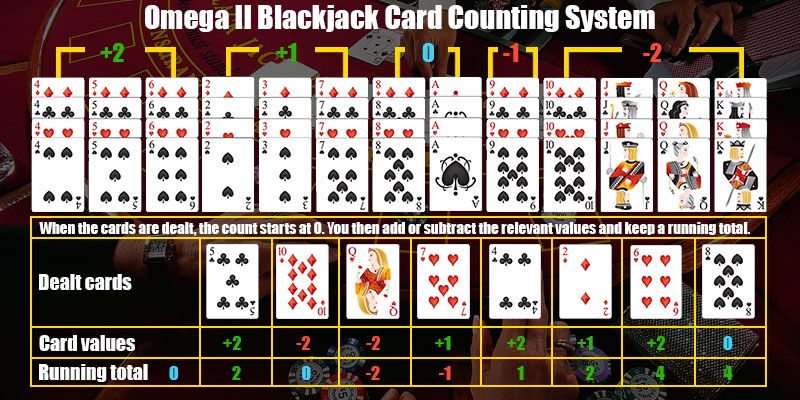
The Omega II card counting system was developed by Bryce Carlson and was introduced in his book Blackjack for Blood in 2001.
It is an advanced system that is difficult to learn, but extremely effective.
What makes this system harder is that the indexes range from -2 to +2, and keeping track of aces is encouraged. That means a lot more to keep track of during a hand.
In addition, a true count is used instead of only the running count, meaning additional math is involved.
Fortunately, the Omega II system is a balanced system, meaning if you were to count down an entire deck, you would end up with 0 at the end, making it easy to practice by counting down decks.
How it Works
Each card in the deck is assigned a value of -2, -1, 0, +1, or +2. The chart of values is:
| 2 | 3 | 4 | 5 | 6 | 7 | 8 | 9 | 10 | J | Q | K | A |
| +1 | +1 | +2 | +2 | +2 | +1 | 0 | -1 | -2 | -2 | -2 | -2 | 0 |
As the cards are dealt, a running count is kept. The count does start at 0 and is increased or decreased per the value of the card dealt. You will then need to convert the running count to the true count before deciding on your bet. The true count is determined by dividing the running count by the estimate of remaining decks in play.
When the next hand is dealt, you add the new card values to the previous running count, not the true count. But once again, when you’re ready to bet, convert the running count to the true count and bet based on the true count.
Your running count will revert back to zero once the cards are shuffled.
ACE TRACKING
Because aces are given a value of zero, some consider them not counted, but keeping track of how many have been dealt, will greatly increase the effectiveness of the Omega II system.
It does mean extra work to keep a separate count of aces, but studies have shown that knowing the ace count, increases the system’s efficiency by almost 3 percent.
If you have a high positive count and know there are still lots of aces left in the deck, increasing your bet at this time, with a greater chance of hitting a blackjack that will pay 3-2, can greatly improve your profits.
SIZING YOUR BETS
As with other systems, the higher the positive true count, the bigger your bet should be. If the true count is low or negative, you want to keep your bet at the table minimum.
Using the true count as a multiplier is again, most popular. For example, if the true count is +4, your bet should be 4 times the table minimum. Conversely, if the true count is +1 or less, your bet should remain the table minimum.
Of course, sizing your bet is totally dependent on your individual playing style. However, the use of a bet sizing system should be practiced because it will keep your wins and losses manageable, while misdirecting the fact that you’re counting cards.
FINAL THOUGHTS
The Omega II counting system is best used by an intermediate player because of its complexity. Omega II is a powerful, effective and efficient system that offers great rewards for those willing to learn it.



